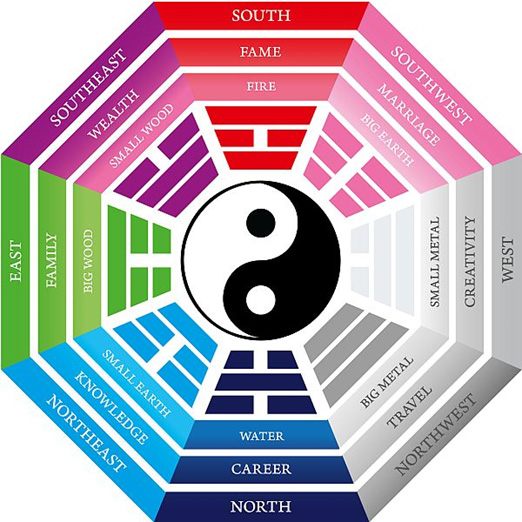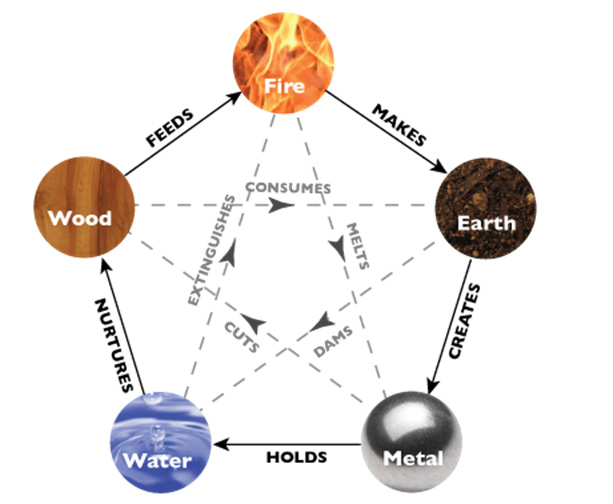
आपले स्वप्नाचे घर अनेक पिढ्यांपर्यंत चालले पाहिजे
उत्तम गुणवत्तेचे सिमेंट वापरा
Feng Shui in interior design
According to the principles of Feng Shui, to create a harmonious home, you need to be sure that there a good energy flow in every room. In Chinese, “Feng” means "wind" and “Shui” means "water". These two elements form the basis of the life force: they symbolize good energy, or “Chi”.. There are two key types of Chi: ”sha chi”, or aggressive energy and ”si chi’ or harmonious energy. The aim of Feng Shui is to balance both of these to regulate and improve aspects of your life, health, and wealth.
When it comes to interior design, the basic concepts of Feng Shui can be useful when mapping out a space. The initial step in decorating your home with Feng Shui principles starts before the actual decorating process. The primary Feng Shui requirement is to clear old residual energy and create a strong and clear energy to start the decorating process with. Essentially, this means starting with no clutter—something which improves what interior designers refer to as the “feel” of an interior drastically.
1. To start, use this map as a guide

Feng Shui maps out the energetic qualities of a space on a Bagua energy map. The map is traditionally drawn as an octagon but the corners are extended for practical purposes.
To use the map, align the entry to your home with the bottom of the map. Each of the five elements help you map your space along with the colour representation for each “realm” of the octagon. Once you define the Bagua, you will know which areas of your home are connected to specific areas of your life. This can essentially help you enhance your interiors. To start, let’s concentrate on a few simple guidelines that you can do at home without needing a Feng Shui specialist.
2. The 5 Feng Shui Elements
The classical five Chinese elements are represented by wood, earth, metal, fire, and water.
Earth element - represents stability and nourishment
The earth element helps to ground and stabilise. Using square shapes and tonal colours such as beige and light yellows, and sandy and terracotta colours, are a simple way to introduce the earth element.
Water element - represents ease, abundance and inner work
The water element is very useful for release and renewal. Mirrors in decor are the most common translation of water in interior design. Accessories with the shades of blue and black are simple ways to bring the water element to your space.
Metal element - represents purity and precision
The metal element is related to mental power and sharpness. Decorative metal accents are the most obvious ways to incorporate the metal element, making it the easiest element to introduce for Feng Shui.
Wood element - represents growth, expansion, and vitality
The wood element represents growth and creativity. Rectangular shapes and decorating with greens and browns, like houseplants and wood shelves, will give this element presence in your space.
Fire element - represents high energy and passion
The fire element represents transformation and expansion. Triangle-shaped decor, candles, and accessories in bold reds, oranges, yellows, pinks and purples are also indicative of fire.
Other basic guidelines for harmonious Feng Shui:
- The main door of your home must be noise-free and should create the proper mood for the entry and exit of your space.
- Use the front door regularly. Iif you have the habit of using a garage door for entry and exit, make sure you remedy that by using the main door as often as possible.
- Water is an important element and placing a water fountain or any other element at the entry of your home is advisable.
- When you have cabinets that are built-up higher near the ceiling, they attract and stagnate dust that leads to the “Chi” getting stuck too. Remedy that by placing house plants or loved objects atop dust-collecting cabinets.
- Draining water equals loss of wealth, hence always keep your bathroom door closed and your toilet seat down when not in use.
- Placing a major piece of furniture well, including a bed, is important in Feng Shui. Make sure your bed is located in a commanding position out of the door line.
- Place your study desk in a commanding position diagonally in a room to overlook the entire space and without your back facing the door, this allows clear thinking.
- Separation between your living, working, and sleeping spaces is key to good energy flow.
- Place a mirror that reflects the entryway to your bedroom such that it can be seen when lying in bed. (Freestanding mirrors are best for this.)
- Electronics have vibrations that cause disturbance in energy flow, hence always try and keep them at a distance of 2 to 3 feet. If a TV in an unavoidable location in your bedroom (where you spend most of your time), make sure you cover it up so it is not constantly exposed.
- For rooms lacking natural light, nix the fluorescent lights and consider investing in incandescent or warm-coloured desk lamps and floor lamps to increase ambient light.
- indows symbolise your eyes to the world outside, make sure they are always clean, clear, and dressed with drapes to ensure good “Chi”.
- In general, yellow and orange interior accents can optimise liveliness and cheerfulness, whereas blues and lavenders can help soothe stress.

Each one of these elements has a unique quality of energy that is expressed in specific colours.
The five elements represent the blessings of Nature: fire, water, wood, metal, and earth are everywhere around us. Use these guidelines to access the “Chi” balance in your space.
Image Sources
Image source: Image source: http://www.crystalwind.ca/feng-shui/bagua-energy-map/To-start-use-this-map-as-a-guide.jpg
Ar. Mrudula Reddy
Master of Landscape Architecture Back
Back